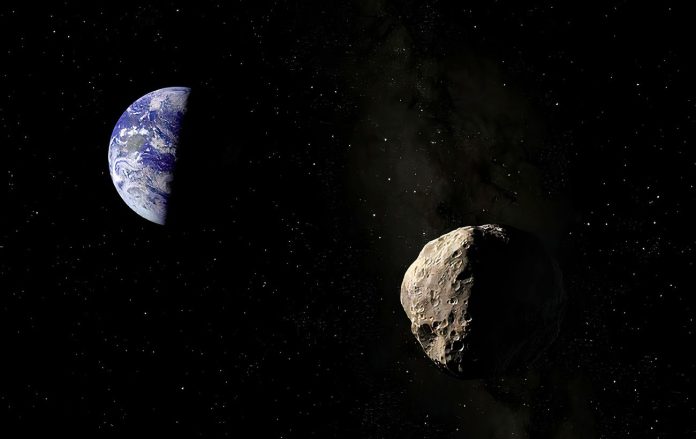At the end of January, the scientific world stirred the news of the 2024 YR4 asteroid, which could get into the ground at the end of 2032. Although the likelihood of collision of this space stone with our planet is estimated at only 2.3%, astronomers are closely monitored for its trajectory, since the speed of movement of the asteroid reaches almost 50,000 km/h.
Asteroid 2024 YR4 has a size of 55 meters and is considered one of the most dangerous for land of space objects. Although the chances of a collision are quite small, scientists are still concerned about the possibility of falling on our planet. According to astronomers, if it really happens, then the catastrophe of planetary scale should not be expected. However, a large metropolis can be destroyed as a result of the fall of such an asteroid. Recently, NASA astronomers have been able to get an image of an asteroid 2024 YR4 using a telescope Observatory Dzhimini in Chile. In the photo, it looks like a stain of light because it does not reflect a lot of sunlight and is a long distance from Earth. At the time of the shooting, the asteroid was about 60 million km from our planet.
However, observation of the asteroid is complicated by its location and very bright light of the moon, which interferes with accurate measurement. Astronomers hope to get clearer data about its trajectory and structure. According to scientists, collisions with the earth in the coming years are not inevitable. Modeling and additional observations may show that the probability of falling asteroid will decrease. At the same time, astronomers suggest another possible scenario - an asteroid can be cut in a month. Through the impact, menstruation stones can get to the ground, although their impact will not be so catastrophic. It will be possible to observe the asteroid of 2024 YR4 in 2028, when the accuracy of the forecasts for its flight will allow to determine more precisely whether there is a threat of collision with the ground. And in March 2025, astronomers plan to use a powerful Webb telescope, located 1.5 million km from Earth, for a deeper study of this space stone.
Although the likelihood of falling asteroid 2024 YR4 is very low on Earth, scientists do not leave this issue without attention. Technological progress in the study of space allows you to improve the accuracy of forecasts every year, which makes it possible to get better for possible space threats.


